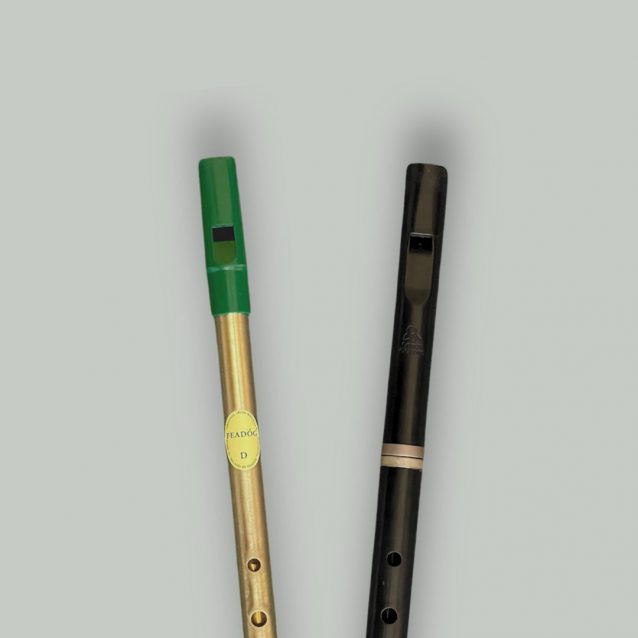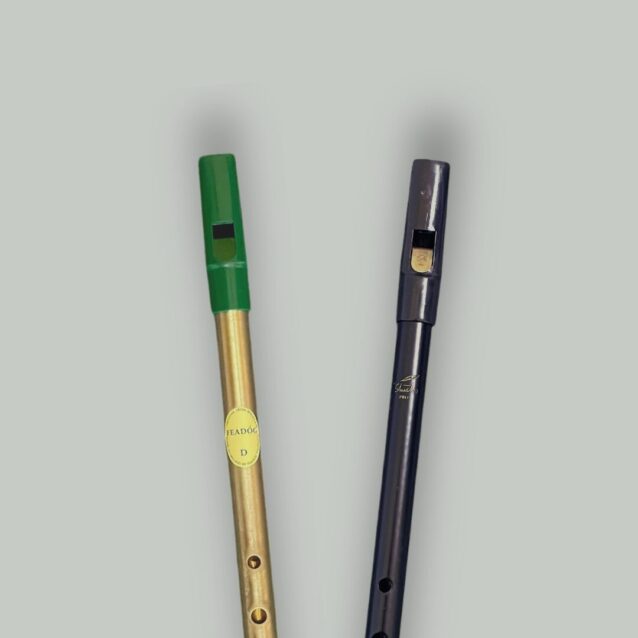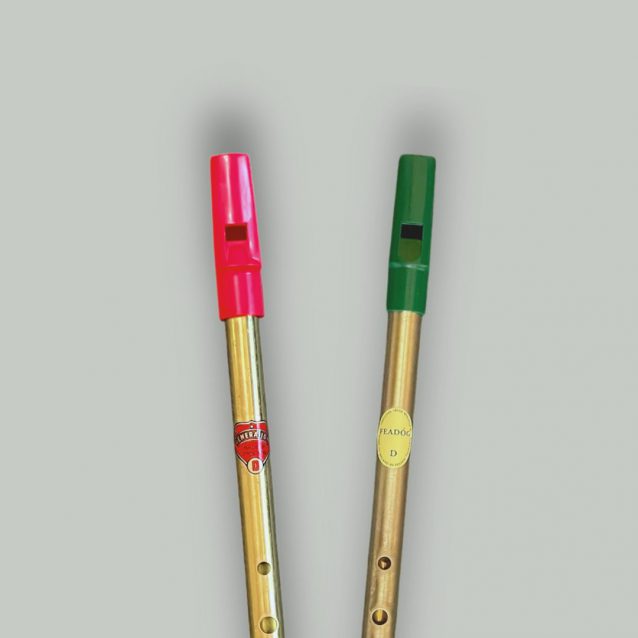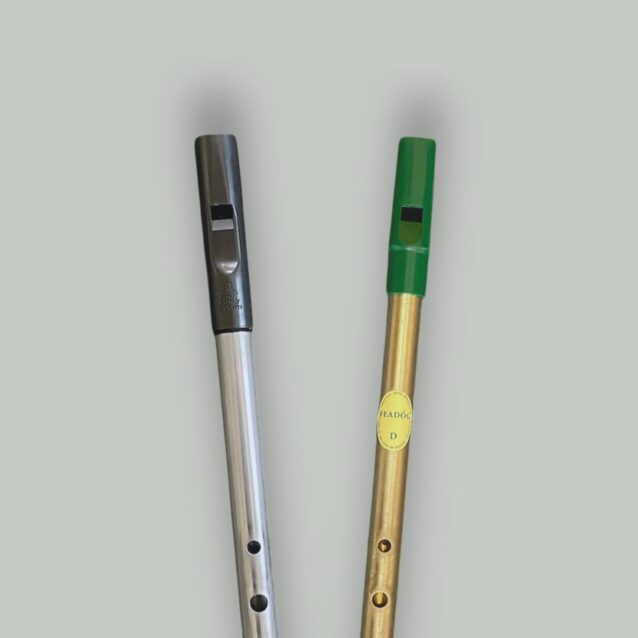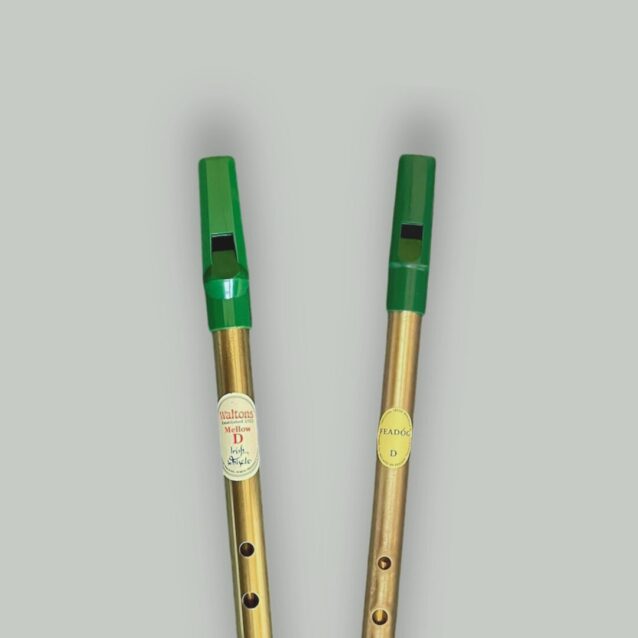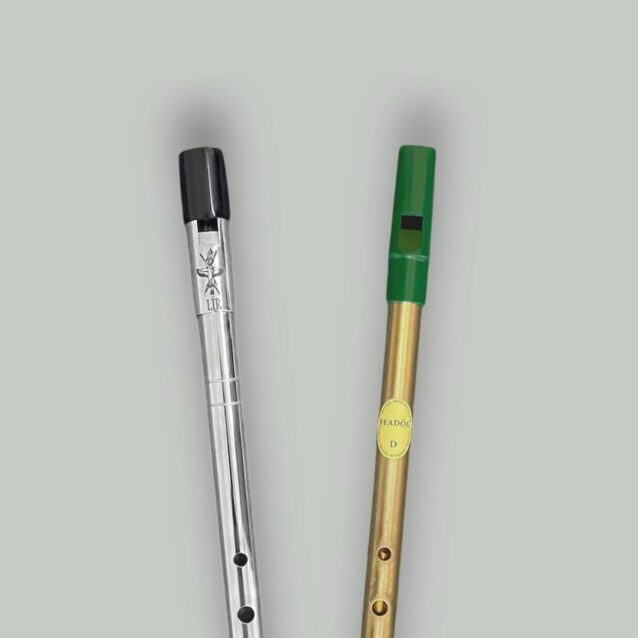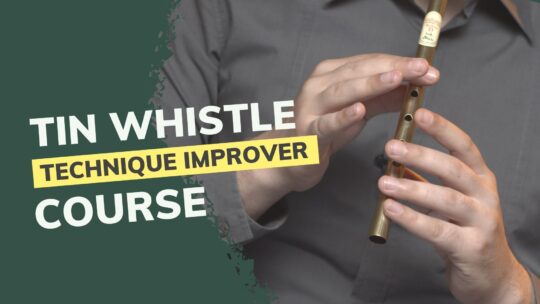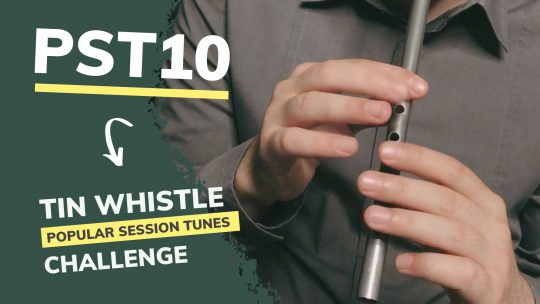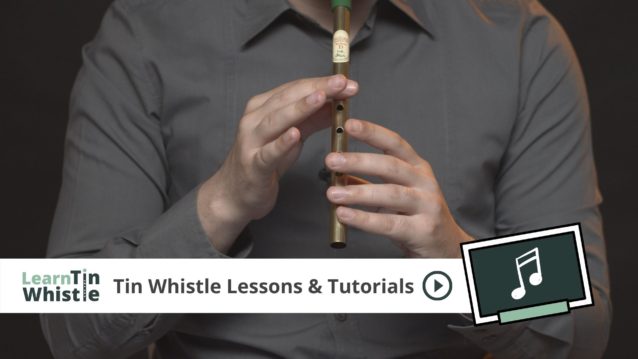Feadóg (which means “whistle” in Irish Gaelic) is one of the most widely recognized entry-level tin whistle brands. Founded in Dublin in 1978, the company has played a major role in bringing Irish traditional music to classrooms and beginners around the world. In this review, we’ll take a closer look at their standard Brass D model.
Design & build
| Model: | Feadog |
|---|---|
| Key: | D (high/soprano) |
| Material: | Brass |
| Mouthpiece: | Plastic |
| Windway type: | Straight |
| Length: | 296mm (11.65″) |
| Weight: | 33g (1.16oz) |
| Bore diameter: | 12mm (~ 0.47″ or 15/32″) |
| Tuneable: | Not tuneable by default (head can be loosened with hot water) |
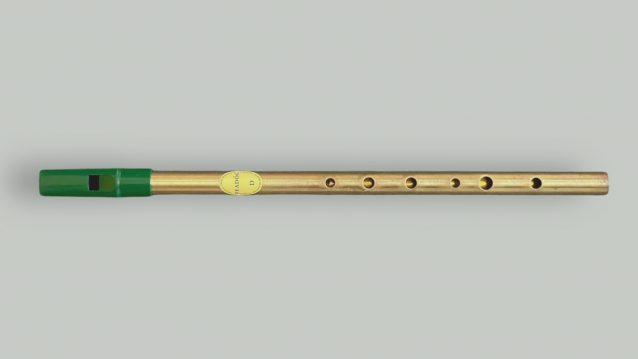
Feadóg whistles are instantly recognizable, and their design has become something of a classic over the years. This particular model features a green plastic head paired with a polished brass body — a look many players associate with the traditional Irish whistle at first glance.
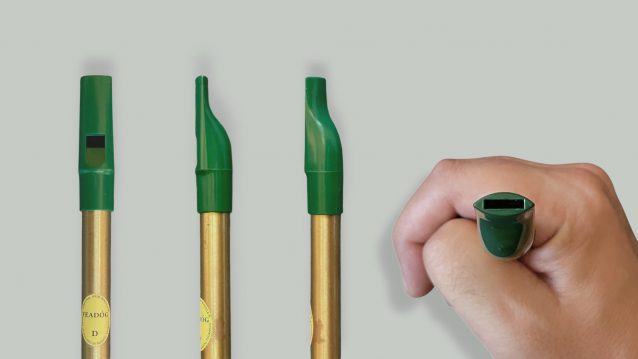
As you can see in the image, the mouthpiece uses a straight windway and is glued to the tube by default. However, it can be carefully removed by soaking the head in hot water (or briefly in boiling water), allowing you to make tuning adjustments by using the joint as a slide.
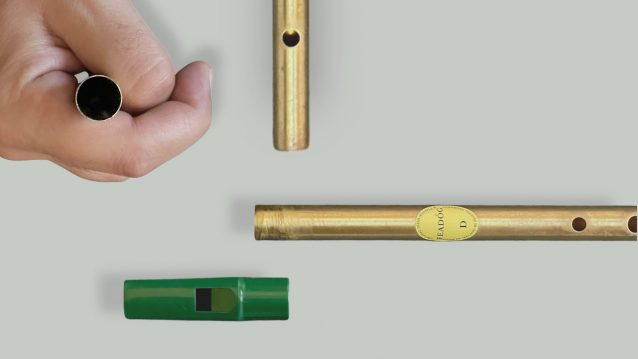
The body is a standard narrow brass tube, typical for high D whistles in this category. And like all instruments made from untreated brass, it will gradually oxidize and develop a patina and stains. But, if you’d prefer to keep the whistle looking shiny, you can easily polish it now and then, as part of occasional tin whistle cleaning.
Feadog – Sound samples and demonstration
The video below features samples from both octaves, starting with slower melodic phrases and then moving into faster tunes to show how the Feadog Brass D responds in different playing contexts.
Feadóg whistles are known for their classic, traditional sound — sweet, with a clear chiff and an airy texture that especially comes through in the upper octave. As you’ll hear in the sound sample, the tone is a bit clearer in the lower octave.
Ornaments come through well, with a sharp and snappy response that suits the whistle’s overall tone character.
Tuning is generally fine, but the C natural using the standard “OXX OOO” fingering tends to be a bit sharp and you’ll get better results with the alternative “OXX XOX”.
How it handles from a player’s perspective
Feadóg whistles are one of the go-to options for beginners stepping into the world of Irish traditional music. Likely one of the reasons they’re commonly used in Irish schools. And like most entry-level models, they’re easy to blow, but controlling the tone can be a bit tricky, especially in the second octave where it’s more prone to squeaks if overblown.
Advanced players usually manage this with ease and can get great tone out of it, assuming they’re after that raw, chiffy sound. But, beginners might struggle, particularly when aiming for clean, reliable high notes.
Since these are mass-produced whistles that are not thoroughly tested, there can be small imperfections in the plastic from unit to unit. If possible, try out a few before buying, directly in a store. And if you’re ordering online, it’s smart to grab at least two at once. The price is low enough that it’s worth it to increase your chances of getting a solid one.
That said, once you’ve learned the basics and you want to keep improving, don’t hesitate to upgrade. A bit more expensive whistle will usually give you more stability, better tuning, and a more enjoyable playing experience overall.
Your thoughts?
Have any questions or impressions about the Feadog whistle? Feel free to drop a comment under the Feadog tin whistle review video on YouTube. We check in regularly and are always happy to chat, answer questions, or hear your experience with the whistle!
Feadog whistle comparisons
Below are a few quick sound comparisons between the Feadog Brass D and other tin whistles. Each clip is recorded using the same microphone and settings to give a fair impression of tone and character, with raw, unprocessed sound.
Please note: due to YouTube’s automatic audio normalization, real volume differences between whistles are effectively removed. That’s actually helpful in this case — since louder sounds are often perceived as better to the human ear on a subconscious level, this allows you to focus more objectively on tone, texture, and response.
Where to buy this whistle
If you’re interested in picking up this whistle, here are a few trusted places where you can find it. Prices typically range around $10, depending on the shop, region and packaging type.
- Amazon
- BigWhistle (UK, ships worldwide)
- Feadog (Ireland, ships worldwide)
- Hobgoblin (UK, ships worldwide)

